Early life
Iyer was born Siddharth Pico Raghavan Iyer in Oxford, England, the son of Indian parents. His father was Raghavan N. Iyer, a philosopher and political theorist then enrolled in doctoral studies at the University of Oxford. [1] [7] His mother was the religious scholar and teacher Nandini Nanak Mehta. [1] He is the great-great-grandson of Indian Gujarati writer Mahipatram Nilkanth. [8] [9] Both of his parents grew up in India then went to England for tertiary education at Oxford, his father as India’s lone Rhodes Scholar in 1950 [10] [11] His name is a combination of the Buddha's name, Siddhartha and that of the Italian Renaissance philosopher Pico della Mirandola, author of On The Dignity of Man. [12]
When Iyer was seven, in 1964, his family moved to California, when his father started working with the Center for the Study of Democratic Institutions, a California-based think tank, and started teaching at University of California, Santa Barbara. [11] [13] [14] For over a decade, Iyer moved between schools and college in England and his parents' home in California. [12]
He was a King's Scholar at Eton College, and won a Demyship [15] Magdalen College, Oxford]] and was awarded a congratulatory double first in English literature in 1978, with the highest marks of any student of English Literature. He then received an A.M. in literature from Harvard University in 1980,to go with the [Oxford MA] he was awarded in 1982.
Career
Iyer taught writing and literature at Harvard before joining Time in 1982 as a writer on world affairs. Since then, he has travelled widely, from North Korea to Easter Island, and from Paraguay to Ethiopia, while writing works of non-fiction and two novels, including Video Night in Kathmandu (1988), The Lady and the Monk (1991), The Global Soul (2000) and The Man Within My Head (2012). He is also a frequent speaker at literary festivals and universities around the world. He delivered popular TED talks in 2013, 2014, 2016 and 2019 [see ted.com] and has twice been a Fellow at the World Economic Forum in Davos.
In 2019, he served as Ferris Professor of Journalism at Princeton University, Guest Director of the Telluride Film Festival. [16] [17] He was also the first writer-in-residence at Raffles Hotel Singapore, where he released his book, This Could be Home (2019), which explores Singapore's heritage through its landmarks. [18]
His 2023 book, The Half Known Life, was a national best-seller, [19] like his earlier works The Open Road [20] and The Art of Stillness. [21] It was also named one of the best books of the year by The New York Times, [22] The New Yorker, [23] Time, [24] NPR and many other news-sources. In addition, it won a Lowell Thomas Gold Medal as Best Travel Book of the Year. [25]
Writing themes
Iyer’s writings began by observing the accelerating criss-crossing of cultures in Asia and across the world, and then, in his 2000 book, The Global Soul, he took that examination within, to explore the quickly increasing number of people world-wide who have many homes and a far wider, and sometimes less visible, sense of belonging than in times past. In a sequel to The Global Soul, The Open Road, he wrote about the XIVth Dalai Lama as an arresting example of one who had found home everywhere in a constantly moving world and reminded all of us that where you stand is more important than where you live.
His subsequent books have been more and more about the inner landscape—how to find faith in a world that often mocks it—and, as he writes in The Half Known Life, how to blend the realism we all need with the hope we can’t live without. Writing often on Leonard Cohen, Thomas Merton, Emily Dickinson and Graham Greene, he has moved beyond the surface, external descriptions of our shifting global world to a deeper enquiry into how we can live.
He has written numerous pieces on world affairs for Time , including cover stories, and the "Woman of the Year" story on Corazon Aquino in 1986. [26] [27] He has written on literature for The New York Review of Books ; on globalism for Harper's; on travel for the Financial Times ; and on many other themes for The New York Times , National Geographic , The Times Literary Supplement , contributing up to a hundred articles a year to various publications. [28] He has contributed liner-notes for four Leonard Cohen albums. His books have appeared in 23 languages so far, including Turkish, Russian, and Indonesian. He has also written introductions to more than 70 books, including works by R. K. Narayan, Somerset Maugham, Graham Greene, Michael Ondaatje, Peter Matthiessen, and Isamu Noguchi. [29]
He has appeared seven times in the annual Best Spiritual Writing anthology, [30] and three times in the annual Best American Travel Writing anthology, [31] and has served as guest editor for both. [32] He has also appeared in the Best American Essays anthology. [33]
The Utne Reader named him in 1995 as one of 100 Visionaries worldwide who could change your life, [34] while the New Yorker observed that "As a guide to far-flung places, Pico Iyer can hardly be surpassed." [35]
Personal life
Iyer has been based since 1992 in Nara, Japan, [36] where he lives with his Japanese wife, Hiroko Takeuchi, [2] [37] and her two children from an earlier marriage. His book, The Lady and the Monk (1991), was a memoir and a reflection of his first year staying in Japan and his first meetings, in 1987, with Takeuchi. [38] His family home in Santa Barbara, California burned down due to a wildfire in 1990. Reflecting on this event, in his words, "For more and more of us, home has really less to do with a piece of soil, than you could say, with a piece of soul." He splits his time between Japan and California. Asked if he feels rooted and accepted as a foreigner (regarding his current life in Japan) Iyer notes:
"Japan is therefore an ideal place because I never will be a true citizen here, and will always be an outsider, however long I live here and however well I speak the language. And the society around me is as comfortable with that as I am... I am not rooted in a place, I think, so much as in certain values and affiliations and friendships that I carry everywhere I go; my home is both invisible and portable. But I would gladly stay in this physical location for the rest of my life, and there is nothing in life that I want that it doesn't have." [39]
Iyer has known the 14th Dalai Lama since he was in his late teens, when he accompanied his father to Dharamshala, India, in 1974. In discussions about his spirituality, Iyer has mentioned not having a formal meditation practice, but practicing regular solitude, visiting a remote hermitage near Big Sur one hundred times since 1991 [40] [41]

Janet Clara Malcolm was an American writer, staff journalist at The New Yorker magazine, and collagist who fled antisemitic persecution in Nazi-occupied Prague just before it became impossible to escape. She was the author of Psychoanalysis: The Impossible Profession (1981), In the Freud Archives (1984), and The Journalist and the Murderer (1990). Malcolm wrote frequently about psychoanalysis and explored the relationship between journalist and subject. She was known for her prose style and for polarizing criticism of her profession, especially in her most contentious work, The Journalist and the Murderer, which has become a staple of journalism-school curricula.

Lobsang Rampa was the pen name of Cyril Henry Hoskin, an author who wrote books with paranormal and occult themes. His best known work is The Third Eye, published in Britain in 1956.
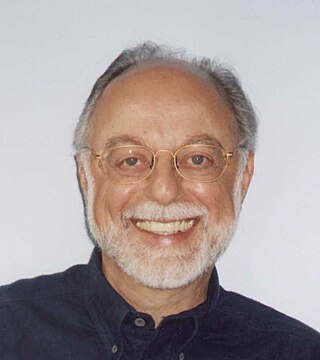
Fred Alan Wolf is an American theoretical physicist specializing in quantum physics and the relationship between physics and consciousness. He is a former physics professor at San Diego State University, and has helped to popularize science on the Discovery Channel. He is the author of a number of physics-themed books including Taking the Quantum Leap (1981), The Dreaming Universe (1994), Mind into Matter (2000), and Time Loops and Space Twists (2011).

Harold Brodkey, born Aaron Roy Weintraub, was an American short-story writer and novelist.

Edward M. Hirsch is an American poet and critic who wrote a national bestseller about reading poetry. He has published nine books of poems, including The Living Fire: New and Selected Poems (2010), which brings together thirty-five years of work, and Gabriel: A Poem (2014), a book-length elegy for his son that The New Yorker called "a masterpiece of sorrow." He has also published five prose books about poetry. He is president of the John Simon Guggenheim Memorial Foundation in New York City.
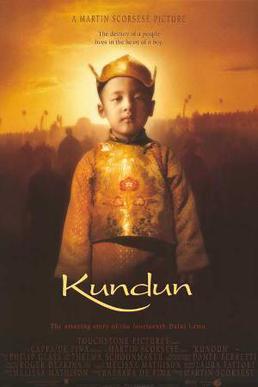
Kundun is a 1997 American epic biographical film written by Melissa Mathison and directed by Martin Scorsese. It is based on the life and writings of Tenzin Gyatso, the 14th Dalai Lama, the exiled political and spiritual leader of Tibet. Tenzin Thuthob Tsarong, a grandnephew of the Dalai Lama, stars as the adult Dalai Lama, while Tencho Gyalpo, a niece of the Dalai Lama, appears as the Dalai Lama's mother.

Harry Bliss is an American cartoonist and illustrator. Bliss has illustrated many books, and produced hundreds of cartoons and 25 covers for The New Yorker. Bliss has a syndicated single-panel comic titled Bliss. Bliss is syndicated through Tribune Content Agency and appears in over 80 newspapers in the United States, Canada and Japan.
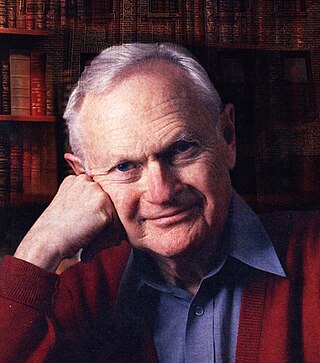
Sherwin Bernard Nuland was an American surgeon and writer who taught bioethics, history of medicine, and medicine at the Yale School of Medicine, and occasionally bioethics and history of medicine at Yale College. His 1994 book How We Die: Reflections on Life's Final Chapter was a New York Times Best Seller and won the National Book Award for Nonfiction, as well as being a finalist for the Pulitzer Prize.
The Years of Lyndon Johnson is a biography of Lyndon B. Johnson by the American writer Robert Caro. Four volumes have been published, running to more than 3,000 pages in total, detailing Johnson's early life, education, and political career. A fifth volume is expected to deal with the bulk of Johnson's presidency and post-presidential years. The series is published by Alfred A. Knopf.
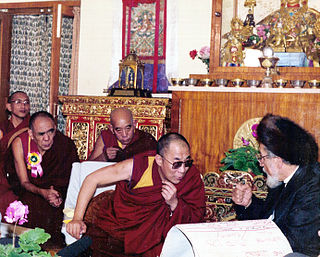
Rodger Kamenetz is an American poet and author best known for The Jew in the Lotus (1994), an account of the historic dialogue between rabbis and the XIV Dalai Lama. His poetry explores the Jewish experience and in recent years, dream consciousness. Since 2003 he's been instrumental in developing Natural Dreamwork, a practice that focuses on the sacred encounters in dreams.
Brad E. Leithauser is an American poet, novelist, essayist, and teacher. After serving as the Emily Dickinson Lecturer in the Humanities at Mount Holyoke College and visiting professor at the MFA Program for Poets & Writers at the University of Massachusetts Amherst, he is now on faculty at the Johns Hopkins Writing Seminars.

Lawrence Wright is an American writer and journalist, who is a staff writer for The New Yorker magazine, and fellow at the Center for Law and Security at the New York University School of Law. Wright is best known as the author of the 2006 nonfiction book Looming Tower: Al-Qaeda and the Road to 9/11. Wright is also known for his work with documentarian Alex Gibney who directed film versions of Wright's one man show My Trip to Al-Qaeda and his book Going Clear. His 2020 novel, The End of October, a thriller about a pandemic, was released in April 2020 during the COVID-19 pandemic, to generally positive reviews.
Patrick Rollo Basil French was a British writer, historian and academician. He was the author of several books including: Younghusband: the Last Great Imperial Adventurer (1994), a biography of Francis Younghusband; The World Is What It Is (2008), an authorised biography of Nobel Laureate V. S. Naipaul that won the National Book Critics Circle Award in the United States of America; and India: A Portrait (2011).

The 14th Dalai Lama, known to the Tibetan people as Gyalwa Rinpoche, is, as the incumbent Dalai Lama, the highest spiritual leader and head of Tibet. He is considered a living Bodhisattva; specifically, an emanation of Avalokiteśvara in Sanskrit, and Chenrezig in Tibetan. He is also the leader and a monk of the Gelug school, the newest school of Tibetan Buddhism, formally headed by the Ganden Tripa. The central government of Tibet, the Ganden Phodrang, invested the Dalai Lama with temporal duties until his exile in 1959.
The Open Road: The Global Journey of the Fourteenth Dalai Lama is a 2008 book by Pico Iyer.
Cynthia Zarin is an American poet and journalist.
Akash Kapur is an Indian-American journalist and author. He is the author of two books, India Becoming and Better to Have Gone ; and the editor of one, Auroville: Dream and Reality. He is the former "Letter from India" columnist for the international New York Times, and has published his work in various magazines and journals around the world. In 2018, Kapur was awarded a Whiting Nonfiction Grant for Better to Have Gone. In 2021, Better to Have Gone was an Amazon bestseller and was named a book of the year by The New York Times, The Wall Street Journal, CNN, The New Statesman, Airmail, Idler magazine, and Scribd. The book was shortlisted for the Tata LitLive prize, and longlisted for the Chautauqua prize.
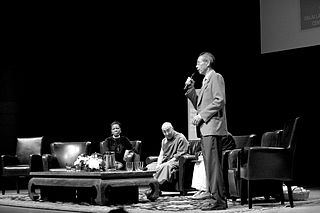
Victor Chan is a physicist and a Hong-Kong-born Canadian writer. Founder of the Dalai Lama Center for Peace and Education, Chan has known the 14th Dalai Lama since 1972. Co-author with him of two essays, he also wrote a guide of pilgrimage to Tibet. He lives in Vancouver in British Columbia, Canada.

Thomas C. Laird is an American journalist, writer, and photographer who specializes in Tibet.
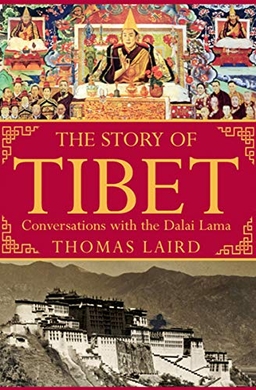
The Story of Tibet: Conversations with the Dalai Lama is a non-fiction book authored by Thomas Laird, an American journalist based out of Kathmandu, Nepal.














